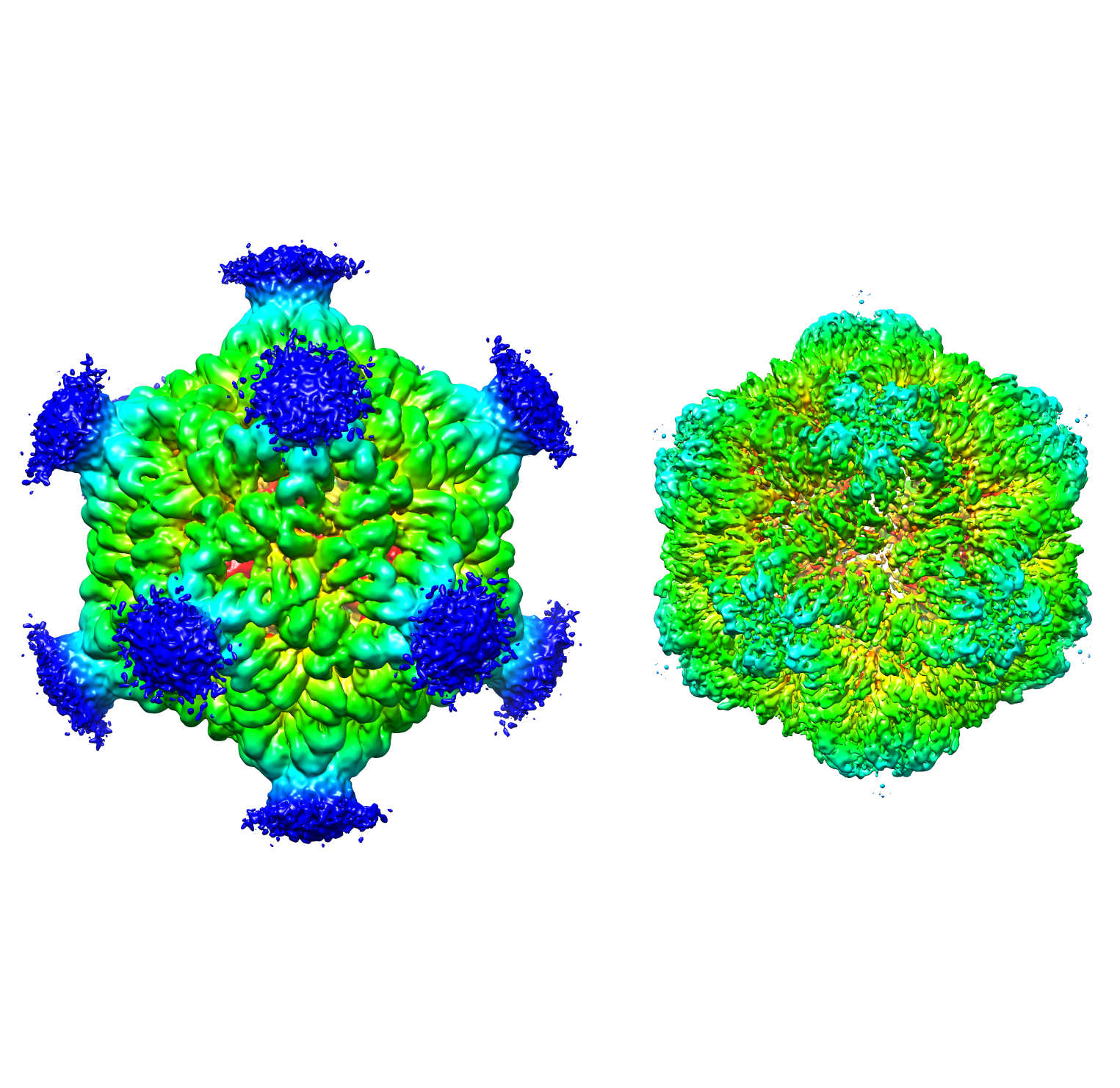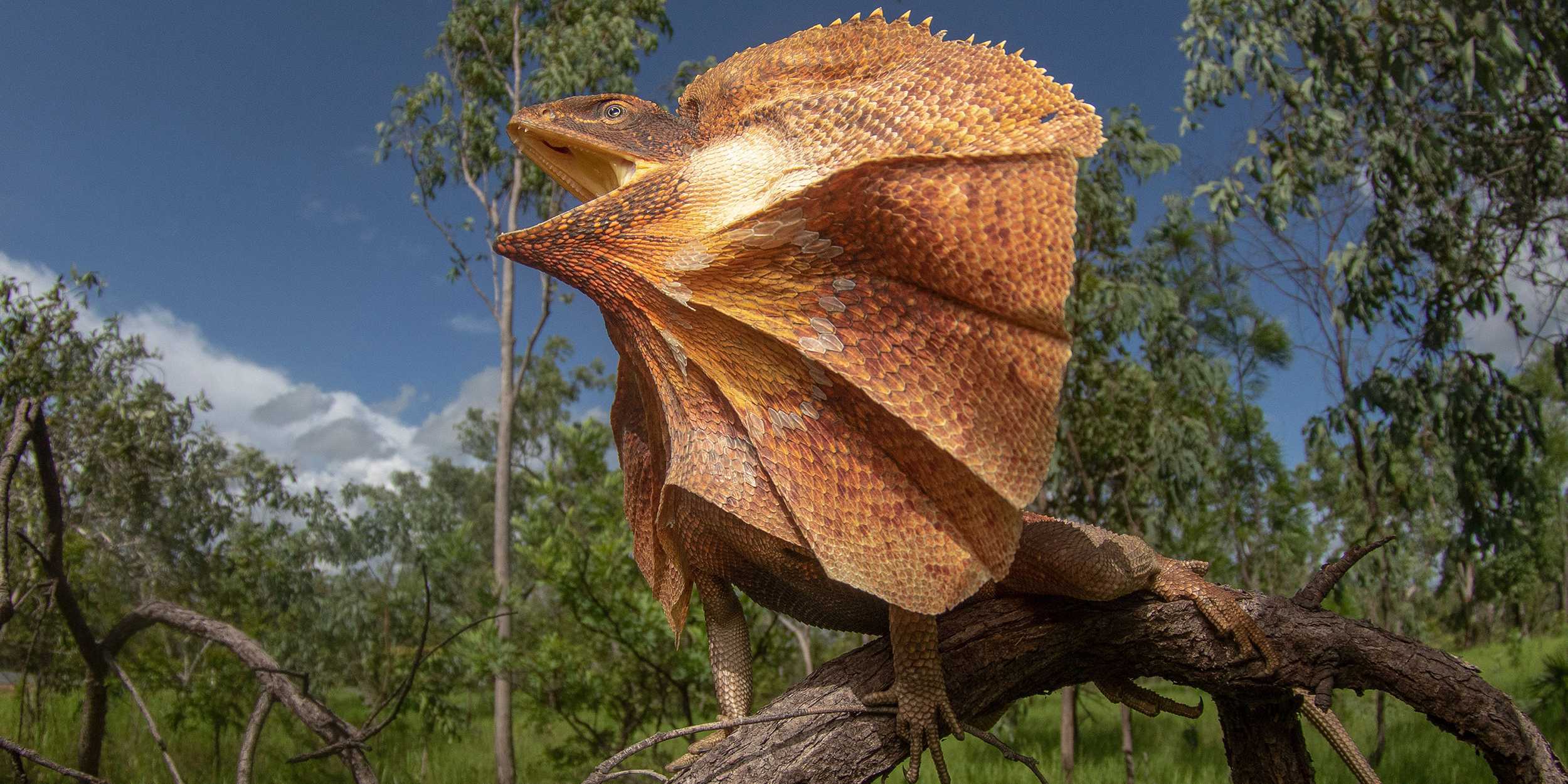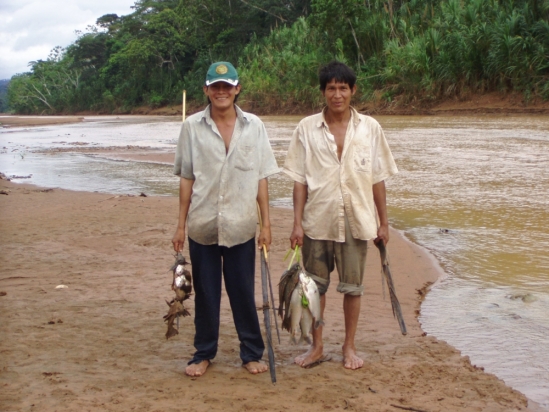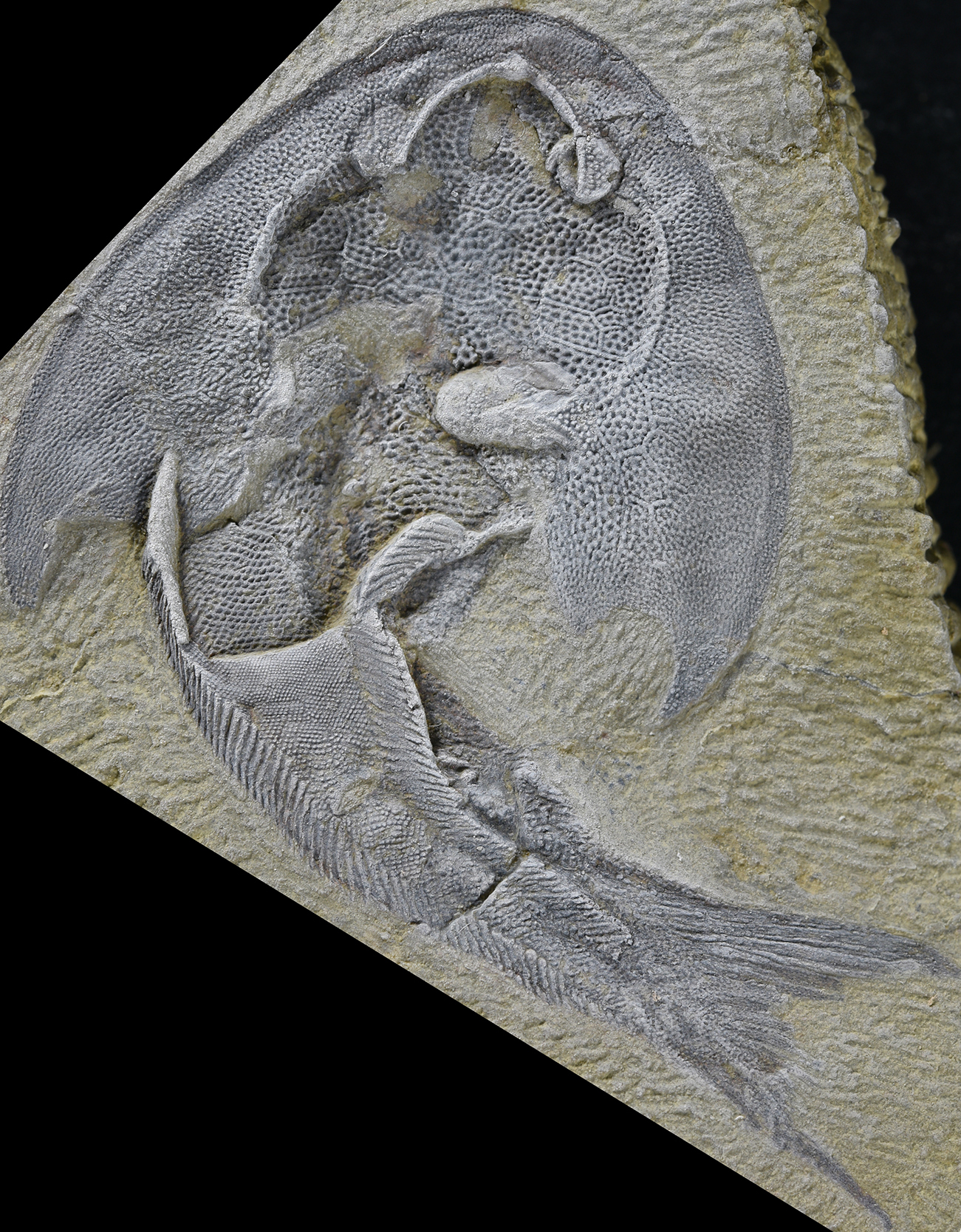Abstract This study examines the digitalization of entrepreneurial ecosystems and its implications for its conceptual boundaries. In particular, it explores opportunities to catalyze the early evolution of entrepreneurial ecosystems stemming from digitalization. Surprisingly, the role of digitalization has not been…
Tag: Evolution
First case of Down syndrome in Neandertals documented in new study
A new study published by an international multidisciplinary team of researchers including faculty at Binghamton University, State University of New York, documents the first case of Down syndrome in Neandertals and reveals that they were capable of providing altruistic care and support for a vulnerable member of their social group.
Different Microorganisms Have a Taste for Different Flavors of Ammonia
Ammonia-oxidizing microorganisms (AOMs) use ammonia as an energy source while converting it to nitrite and play a pivotal role in the global nitrogen cycle. This study explored whether different AOM species preferred to use urea over ammonia. It found that some AOMs preferred urea while others used ammonia and urea simultaneously.
These jacks-of-all-trades are masters, too: Yeast study helps answer age-old biology question
The results, published April 26 in the journal Science, suggest that internal — not external — factors are the primary drivers of variation in the types of carbon yeasts can eat, and the researchers found no evidence that metabolic versatility, or the ability to eat different foods, comes with any trade-offs. In other words, some yeasts are jacks-of-all-trades and masters of each.
Mountain chickadees have remarkable memories. A new study explains why
Mountain chickadees have among the best spatial memory in the animal kingdom. New research identifies the genes at play and offers insight into how a shifting climate may impact the evolution of this unique skill.

Toothed whale echolocation organs evolved from jaw muscles
Genetic analysis finds evidence suggesting that acoustic fat bodies in the heads of toothed whales were once the muscles and bone marrow of the jaw.
We’ve had bird evolution all wrong
A pair of research papers reveals that genomic anomalies misled scientists about the true evolutionary history of birds.
Ancient retroviruses played a key role in the evolution of vertebrate brains
Researchers report in the journal Cell that ancient viruses may be to thank for myelin—and, by extension, our large, complex brains.

Brain Protein’s Virus-Like Structure May Help Explain Cancer-Induced Memory Loss
In a rare but serious complication of cancer, the immune system can start attacking the brain, causing rapid memory loss. What triggers this was largely unknown. Now, researchers at University of Utah Health have found that some tumors can release a virus-like protein, kickstarting an out-of-control autoimmune reaction.
How did humans learn to walk? New evolutionary study offers an earful
The inner ear of a 6-million-year-old fossil ape reveals clues about the evolution of human movement.
450-million-year-old organism finds new life in Softbotics
Researchers used fossil evidence to engineer a soft robotic replica of an extinct marine organism to understand how locomotion has changed in animals over time.
Advances in soft robotics usher in a new era of scientific analysis
Could robots, whose forms can be adapted to achieve almost any real-world task, soon be able to lend a hand in understanding the paleoecology tracing of extinct organisms?
Long-term lizard study challenges the rules of evolutionary biology
James Stroud, assistant professor in the School of Biological Sciences at the Georgia Institute of Technology, measured natural selection in four Anolis lizard species in the wild for five consecutive time periods over three years.
These Robots Helped Understand How Insects Evolved Two Distinct Strategies of Flight
Robots built by engineers at the University of California San Diego helped achieve a major breakthrough in understanding how insect flight evolved, described in the Oct. 4, 2023 issue of the journal Nature. The study is a result of a six-year long collaboration between roboticists at UC San Diego and biophysicists at the Georgia Institute of Technology.
How Insects Evolved to Ultrafast Flight (And Back)
This asynchronous beating comes from how the flight muscles interact with the physics of the insect’s springy exoskeleton. This decoupling of neural commands and muscle contractions is common in only four distinct insect groups. For years, scientists assumed these four groups evolved these ultrafast wingbeats separately, but research from the Georgia Institute of Technology and the University of California, San Diego (UC San Diego) shows that they evolved from a single common ancestor. This discovery demonstrates evolution has repeatedly turned on and off this particular mode of flight. The researchers developed physics models and robotics to test how these transitions could occur.
Insights into early snake evolution through brain analysis
Recent study sheds new light on the enigmatic early evolution of snakes by examining an unexpected source: their brains. The results emphasise the significance of studying both the soft parts of animals’ bodies and their bones for understanding how animals evolved.
Genome study reveals 30 years of Darwin’s finch evolution
An international team of researchers has released a landmark study on contemporary evolutionary change in natural populations. Their study uses one of the largest genomic datasets ever produced for animals in their natural environment, comprising nearly 4,000 Darwin’s finches.
Prehistoric fish fills 100 million year gap in evolution of the skull
A 455-million-year-old fossil fish provides a new perspective on how vertebrates evolved to protect their brains, a study has found.
Evolution wired human brains to act like supercomputers
Scientists have confirmed that human brains are naturally wired to perform advanced calculations, much like a high-powered computer, to make sense of the world through a process known as Bayesian inference.
Pioneering research sheds surprising new light on evolution of plant kingdom
A new study has uncovered intriguing insights into the evolution of plant biology, effectively rewriting the history of how they evolved over the past billion years.
Hormone alters electric fish’s signal-canceling trick
New research shows that the hormone testosterone — which naturally triggers male electric fish to elongate the electric pulses they send out during the breeding season — also alters a system in the fish’s brain that enables the fish to ignore its own electric signals.
Mutation accessibility fuels influenza evolution
Scientists at St. Jude Children’s Research Hospital showed that fixed mutations within a viral population most likely stem from how easy it is to acquire that mutation (i.e., mutation accessibility) rather than just its benefit.
In a sea of fish diversity, UWM scientist finds even more
Cichlids represent the most diverse adaptions of vertebrates in the world, and most of them live in the freshwater African Great Lakes. Michael Pauers of UW-Milwaukee and Titus Phiri, at the Malawi Department of Fisheries, have added several new species of the colorful fish – in the genus Labeotropheus.

Why there are no kangaroos in Bali (and no tigers in Australia)
If you travel to Bali, you won’t see a cockatoo, but if you go to the neighbouring island of Lombok, you will. The situation is similar with marsupials: Australia is home to numerous marsupial species, such as the kangaroo and the koala. The further west you go, the sparser they become.
Artificial cells demonstrate that “life finds a way”
A study using a synthetic ‘minimal cell’ organism stripped down to the ‘bare essentials’ for life demonstrates the tenacity of organism’s power to evolve and adapt, even in the face of an unnatural genome that would seemingly provide little flexibility.
Climate change could lead to “widespread chaos” for insect communities
New research from Binghamton University, State University of New York explores how a warming world could impact ecosystems and derail the development of new species.
Dinosaurs were the first to take the perspectives of others
When someone near you turns their head towards something in the environment, you likely can’t help to follow their gaze direction. This reaction is observed in mammals, birds and even reptiles alike.
Butterfly beginnings
Biologists from Washington University in St. Louis collaborated with a large number of butterfly and plant specialists to reconstruct the origin and global spread of butterflies. Working with researchers from dozens of countries, Michael Landis and Mariana P. Braga in Arts & Sciences helped create the world’s largest butterfly tree of life, assembled with DNA from more than 2,000 species representing all butterfly families.
Second gene implicated in malaria parasite resistance evolution to chloroquine
How malaria parasites evolved to evade a major antimalarial drug has long been thought to involve only one key gene. Now, thanks to a combination of field and lab studies, an international research team has shown a second key gene is also involved in malaria’s resistance to the drug chloroquine.
The Science of Consciousness – 2023 Conference
Over 500 scientists, philosophers, scholars, artists will gather in Taormina Sicily and engage in discussions to try to get as close as possible to the question regarding the nature of consciousness.
ProSocial World: How the principles of evolution can create lasting global change
Knowing how cultural evolution happens also means we can harness it for the larger good, creating a more just and sustainable world, according to a new article from a research team including faculty at Binghamton University, State University of New York.
Starting small and simple – key to success for evolution of mammals
The ancestors of modern mammals managed to evolve into one of the most successful animal lineages – the key was to start out small and simple, a new study reveals.

An embarrassment of riches
Among Indigenous, rural non-industrial populations inhabiting the tropical forests of lowland Bolivia, researchers report, there appears to be an optimal balance between levels of food consumption and exercise that maximizes healthy brain aging and reduces the risk of disease.
Nature Favors all Creatures Great and Small Over Medium
A survey of body sizes of Earth organisms, published Wednesday, March 29, in the science journal PLoS ONE, shows that the planet’s biomass – the material that makes up all living organisms – is concentrated in organisms at either end of the size spectrum.
New Fossil Analysis Reveals Dinosaur with Record-Holding 15-Meter-Long Neck
An international scientific team led by Stony Brook University paleontologist Andrew J. Moore, PhD, has revealed that a Late Jurassic Chinese sauropod known as Mamenchisaurus sinocanadorum sported a 15-meter-long neck. The details will be published in the Journal of Systematic Palaeontology and provide fresh insights on the evolution of the iconic sauropod body.
Hummingbirds use torpor in varying ways to survive cold temps
Hummingbirds have the fastest metabolism of any animal. The tropical hummingbirds that live in the Andes Mountains in South America must expend considerable energy to maintain their high body temperatures in cold environments. One tool that they use to survive cold nights is called torpor, a hibernation-like state that allows them to ramp down energy consumption to well below what they normally use during the day.
Plague trackers: Researchers cover thousands of years in a quest to understand the elusive origins of the Black Death
Seeking to better understand more about the origins and movement of bubonic plague, in ancient and contemporary times, researchers at McMaster University, University of Sydney and the University of Melbourne, have completed a painstaking granular examination of hundreds of modern and ancient genome sequences, creating the largest analysis of its kind.
Island tiger snakes’ skulls adapt to eat large sea bird chicks
A study by researchers from the University of Adelaide and other institutions has found that in a population of island tiger snakes the bones in their jaws increase in length after feeding on large prey, while their mainland counterparts show no change.
How the last 12,000 years have shaped what humans are today
While humans have been evolving for millions of years, the past 12,000 years have been among the most dynamic and impactful for the way we live today, according to an anthropologist who organized a special journal feature on the topic. Our modern world all started with the advent of agriculture, said Clark Spencer Larsen, professor of anthropology.
Ancient Iowan superpredator got big by front-loading its growth in its youth
The Field Museum in Chicago is home to the best, most-complete fossils of a prehistoric superpredator– but one that lived hundreds of millions of years before SUE the T. rex. Whatcheeria was a six-foot-long lake-dwelling creature with a salamander-like body and a long, narrow head; its fossils were discovered in a limestone quarry near the town of What Cheer, Iowa.
Footprints indicate the presence of man in Southern Spain in the Middle Pleistocene, 200,000 years earlier than previously thought
The researcher and GRS Radioisotopes technician from the University of Seville, Jorge Rivera, has participated in an incredible discovery that is unique in Europe.

Study shows differences between brains of primates — humans, apes and monkeys — are small but significant
While the physical differences between humans and non-human primates are quite distinct, a new study reveals their brains may be remarkably similar. And yet, the smallest changes may make big differences in developmental and psychiatric disorders.
Study: More Than One Way to Build a Black Bird
Scientists have so far found at least two genetic pathways leading to the same physical outcome: all-black feathers. This change was no random accident. It was a result of nature specifically selecting for this trait. The new study is published in the journal PLOS Genetics.
New Scottish fossil sheds light on the origins of lizards
A fossil discovery from Scotland has provided new information on the early evolution of lizards, during the time of the dinosaurs.

Dead fish breathes new life into the evolutionary origin of fins and limbs
A trove of fossils in China, unearthed in rock dating back some 436 million years, have revealed for the first time that the mysterious galeaspids, a jawless freshwater fish, possessed paired fins.
Armoured worm reveals the ancestry of three major animal groups
An international team of scientists, including from the Universities of Bristol and Oxford, and the Natural History Museum, have discovered that a well-preserved fossilised worm dating from 518-million-years-ago resembles the ancestor of three major groups of living animals.
Earliest land animals had fewer skull bones than fish – restricting their evolution, scientists find
The skulls of tetrapods had fewer bones than extinct and living fish, limiting their evolution for millions of years, according to a latest study.
Weedy rice has become herbicide resistant through rapid evolution
Biologists used whole-genome sequences of 48 contemporary weedy rice plants to show how herbicide resistance evolved by gene flow from crop rice. Almost all other cases of herbicide resistance in agricultural weeds result from selection of tolerant genotypes in the weed species.
Eight new species of tiny geckos tumbling out of Madagascar’s rainforests
An international team has discovered and named eight new day gecko species from Madagascar, and each of them is no longer than your pointer finger.
New discovery of panda species which may have been Europe’s last
Lumbering through the forested wetlands of Bulgaria around six million years ago, a new species of panda has been uncovered by scientists who state it is currently the last known and “most evolved” European giant panda.